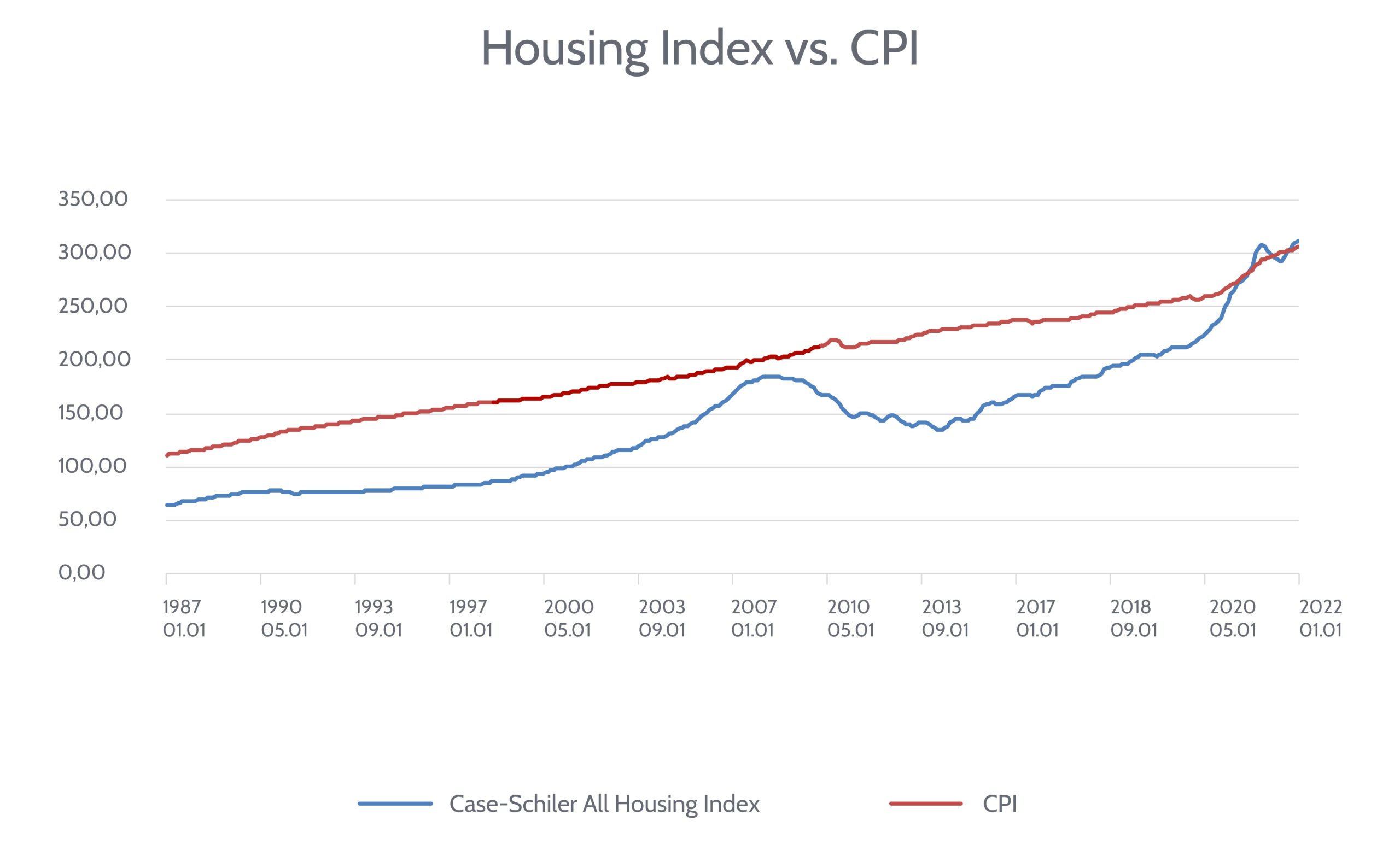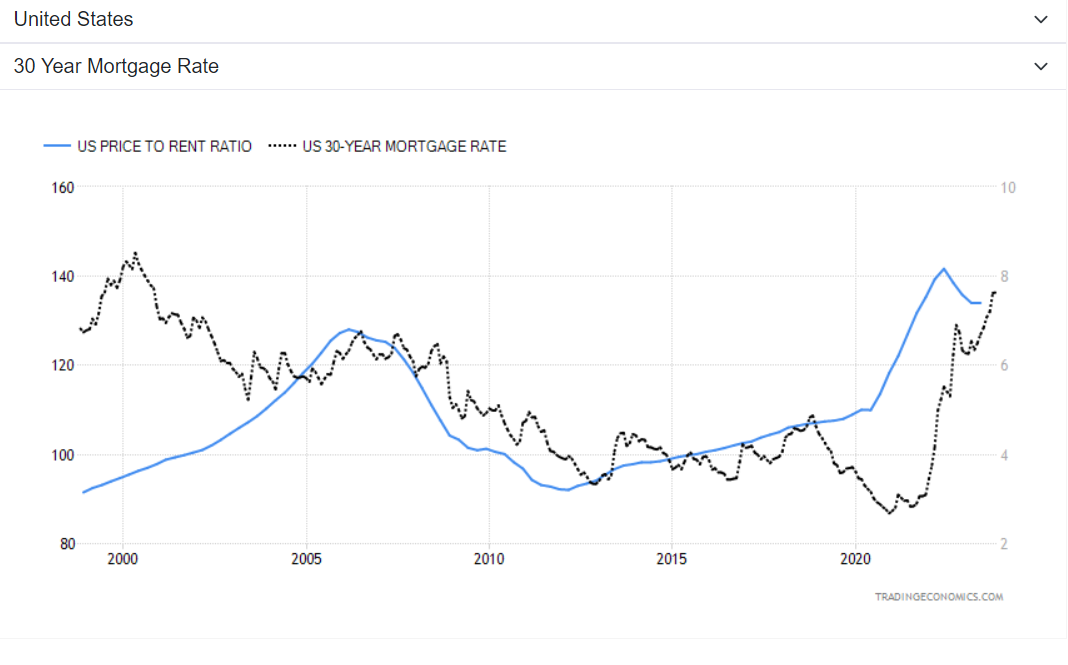Is It a Good Time to Invest in Real Estate


US Housing Market Current Investment Outlook
The real estate market is a fundamental pillar of personal wealth in the United States, consistently demonstrating its prowess over the long term. In recent years, real estate investments have notably thrived, prompting many to ponder a critical question: Is it a good time to invest in real estate?
Digging into this question shows us how the ever-changing real estate scene is creating and still shaping investment chances. Look below for the scoop on today’s real estate scene and key things to consider if you’re considering jumping into the market.
Exploring the Past: Case-Schiller All Housing Index vs. US Consumer Price Index (CPI)
Let’s give you an idea of how the Case-Schiller All Housing Index has performed relative to the US Consumer Price Index (CPI).
Performance from 1987 to 2023
The Housing Index increased by 490%, while the CPI increased by 275%. The housing market has delivered actual returns above inflation. Annualizing those returns over 39 years, we conclude that, on average, annual inflation has been around 2,6% while housing prices increased on average at an annual rate of 4,1%.
In other words, for those 39 years of accurate, above-inflation, returns for the Housing Index were 1,5% annually.
Performance from 2014 to 2023
From January 2014 to August 2023, the Housing Index increased by 95%, while CPI increased 30%. That means that annually for the period, Housing increased at 6,9% while CPI increased at 2,7%.
Therefore, for those ten years, actual, above-inflation returns for the Housing Index have been 4,2% annually.
Performance since January 2020
What about even more recent data? For those four years, the Housing index increased 10% annually while CPI has increased 4,3% annually. As such, actual, above-inflation returns on the Housing Index have been 5,7% annually.
Many of you have likely observed this firsthand – while real estate investments are generally profitable, their recent profitability has surpassed expectations.
The question becomes, are those returns sustainable? Please see below Price-To-Rent Ratio vs 30-Year Mortgage Rates:
Reading the Signs: Price-To-Rent Ratio vs. 30-Year Mortgage Rates
Let’s ensure a clear understanding of the graph. The blue line represents the Price-To-Rent Ratio at 134 (left side). This signifies that currently, it typically takes 134 monthly rents to cover the market value of a real estate investment. The black line shows the 30-year Mortgage Rate, presently at 7.5%. Notably, when mortgage rates were last at 8% in 2000, the Price-To-Rent Ratio was 95. In practical terms, this suggests that for the current ratio to align with the 2000 ratio, housing prices must decrease by 30% while rents remain constant.
Yes, housing prices are way too high relative to where rental prices and mortgage rates are. One of the reasons for this overvaluation is that in 2021 and 2022, many investors purchased real estate as a hedge against inflation.
However, inflation has been going down, and estimates for future inflation have returned to a lot more normal levels- please see below the 10-year inflation breakeven rates:
It is hard to believe, but markets are forecasting an average inflation of 2,4% annually for the next ten years.
The high valuations and lack of affordable financing have resulted in a lack of transactions. Take a look at US Existing Home Sales:
Sales of existing homes are comparable to sales in 2009 and 2010. Yes, existing home prices are quoted higher, but nobody is buying.
The Verdict: Is Now the Right Time to Invest in Real Estate Market?
In conclusion, now is the least favorable moment to enter the real estate market. Although real estate prices have yielded above-average returns over the past decade, the rental market fails to substantiate these current prices.
With interest rates at 7.5% for 30-year mortgages, we estimate that the US Housing Index may be overpriced by approximately 30%.
While we do not anticipate an imminent market crash, we caution against involvement in the real estate sector. Instead, we propose an alternative approach for our clients. Consider diverting investments towards government bonds, particularly short-term (up to 12 months) government bonds offering yields of around 5.5% in USD and 3.5% in EUR.
We believe that concerns about inflation are unwarranted, and the current yields in government bonds present a more favorable investment scenario.
Get the trading edge you need in today’s markets – sign up for our monthly newsletter featuring in-depth expert analysis, hot market insights, and exclusive trading strategies.




